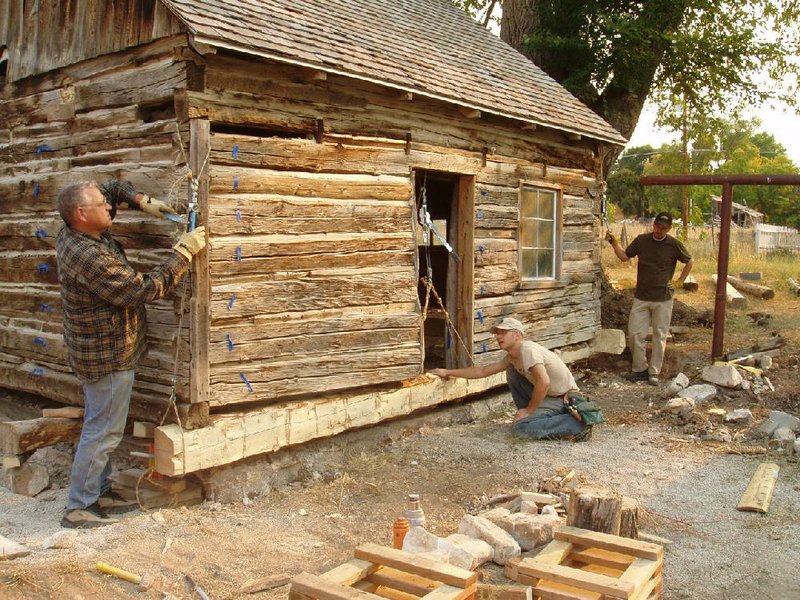LITTLE ROCK — The Historic Arkansas Museum in downtown Little Rock is preparing to host a 21st-century seminar at which Honest Abe himself might feel right at home.
Its focus is not the Civil War or slavery. Instead, the March 4-8 workshop is titled “Log Cabin Repair and Restoration.” During the five day workshop, offered by the Campbell Center for Historic Preservation Studies in Mount Carroll, Ill., attendees will spend two to three hours a day learning about cabin decay and deterioration issues and another three to four hours repairing a log cabin on the museum grounds.
Log cabins, and log structures in general, are vanishing at a faster pace than ever, says Joe Gallagher of Boise, Idaho, who will lead the workshop.
“They’re going away every day,” Gallagher says. “We’re losing them all the time.”
Various culprits are at play. Some cabins weren’t designed for long-term preservation and some that were haven’t been properly maintained, Gallagher says.
“There are hundreds of log structures still around in Arkansas,” says Bill Worthen, director of the Historic Arkansas Museum. “The tragedy is that the use for them is simply not there anymore because of increased urbanization and mechanization of the farm. Some people are preserving them for hunting lodges and weekend retreats, but in many cases, instead of being a resource, they become a liability and people are taking them down and burning them.”
“Some are private homes, which are actually being lived in; others are being used as museums or interpretive centers, and still others are being used as offices,” he says.
Plenty of log cabins have been built recently, many of them from 1980 to 2000, when baby boomers were building their second summer homes, Gallagher says. He suspects due to poor design or construction, use of inappropriate materials, or a combination of those factors that many of them won’t stand the test of time.
Before retiring recently from the U.S. Forest Service, Gallagher worked with leading architectural conservationists in the restoration of numerous early 20th-century cabins, barns, houses and offices. Since 1983, he has also been the principal owner of Heritage Preservation Resources, a log cabin restoration, repair, preservation and conservation service. He says he has helped restore, repair or assess more than 400 log and timber structures nationwide, most of which are eligible for or on the National Register of Historic Places and some that are on the list of National Historic Landmarks, which means the secretary of the Interior Department determined them to be nationally significant in American history and culture.
Some of the topics he will address include causes of decay and deterioration, how to install logs and make notches, and appropriate finishes and coatings for log structures. It will also include the do’s and don’ts of daubing (mixing clay or lime with sand, water and a bonding fiber such as horse hair to cover chinking material used to fill the voids between logs), foundations, roofs, moisture, and maintenance issues unique to log structures.
“Students will get the benefit of the extensive research done on my part and how to avoid mistakes and how to use tools to repair log structures,” Gallagher says.
During the hands-on portion of the workshop, participants will help hew and install a pair of sill logs in the museum’s circa 1850s Plum Bayou log cabin. The cabin was originally located south of Scott on the edge of Plum Bayou near what is now Toltec Mounds Archeological State Park. It was possibly built by a free black man. It was donated to the museum and moved there in 1976, Worthen says.
“The log structure is an important aspect of our material culture,” Worthen says. “We think it’s important for folks around here to be sensitive to … issues involving them.”
Worthen says log cabins were the original mobile home. “Settlers could take them apart, and move them and set them up somewhere else.” For more information or to register for the course, which costs $900, call the Campbell Center at (815)244-1173 or visit , visit campbellcenter.org/pages/registration.html or call David Etchieson at the Historic Arkansas Museum at (501) 324-9351.
HomeStyle, Pages 38 on 02/23/2013

